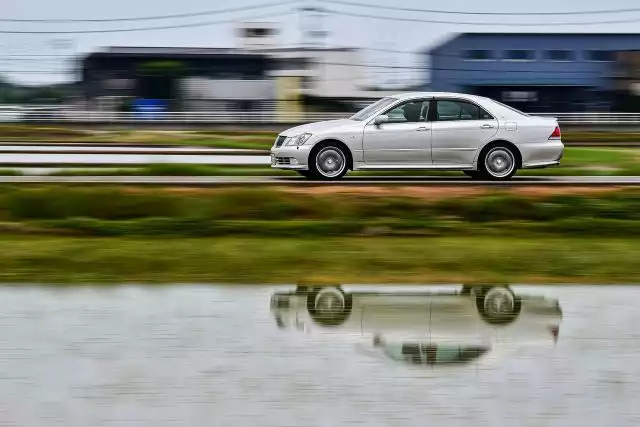The Toyota Mirai’s Olympic Backlash: ‘Scientifically Misaligned’

While Toyota continues to invest heavily in the fuel-cell technology it pioneered, owners of the Mirai have filed lawsuits and demanded buybacks over the lack of fueling stations, the extremely high price of hydrogen and a general sense of being deceived by the manufacturer.
The Paris 2024 Summertime Olympics are much less than two weeks away from their July 26 kickoff. The organizers are proclaiming the event as the “greenest-ever,” with half the carbon footprint contrasted to previous Games. But a team of researchers, engineers and academics are upset regarding the official cars and truck selected for this event.
Just how does Toyota plan on fueling the 500 Mirai FCEVs that will shuttle professional athletes and officials via France’s capital? With hydrogen stemmed from water and organic matter generated with sustainable sources, the firm claimed, according to CNN.
Still, the Mirai has actually been a consistent resource of debate recently, particularly in the U.S. While Toyota remains to spend heavily in the fuel-cell technology it pioneered, owners of the Mirai have submitted legal actions and demanded buybacks over the lack of fueling terminals, the extremely high rate of hydrogen and a basic sense of being deceived by the producer.
In the U.S., Mirai owners were left scratching their heads after numerous hydrogen stations were shut down, forcing them to drive dozens of miles to refuel, just to uncover that there’s a long queue or that the station is inaccessible, as InsideEVs uncovered after speaking to several owners of Toyota’s front runner hydrogen car. “The whole H2 vehicle experience is an experiment that is falling short,” one Mirai proprietor told InsideEVs earlier this year. “I really did not expect to acquire a car from Toyota and really feel fooled, ripped off, and misdirected.”.
With absolutely no tailpipe emissions and the prospect of hydrogen fueling stations spanning at the very least as much as standard gas stations, it was the perfect solution. With the substantial majority of industrial hydrogen still coming from fossil fuels, a collapsing framework and dropping resale values, the Mirai came to be an undesirable car that proprietors are struggling to obtain rid of.
To their debt, Toyota and the Paris 2024 Olympic Gamings coordinators will release a fleet of over 2,650 energized vehicles, consisting of 1,150 battery-powered EVs, 500 Mirai FCEVs, 10 hydrogen buses and around 250 battery-powered Accesibile (APMs.).
Presumably that entails some portable hydrogen terminals that will certainly go away as soon as the Olympics more than, leaving the taxi drivers that will get the keys to the Mirais after the occasion stuck to cars and trucks that are a logistical nightmare to refuel.
“We are contacting share our problem that Toyota’s promo of a hydrogen car is medically misaligned with net-zero and will damage the track record of the 2024 Games,” the letter stated, as released by Hydrogen Insight and CNN. “Chance remains to reroute, and we advise that you call for Toyota to replace the Mirai with a Battery Electric Automobile as the main Games lorry.”
Attaining the 2024 Olympics’ ambitious green-energy objective will certainly entail using huge photovoltaic arrays, frameworks that can be made use of after the video games are over, and of course, use of the Mirai car. However also sustaining hydrogen cars is as a lot an obstacle there as it is anywhere.
To put points into point of view, there are fewer than 10 hydrogen fueling terminals in the whole of Paris– the city that organizes this year’s Olympics. According to the European Hydrogen Refuelling Stations Availability System, a public-private collaboration sustaining research and advancement activities in hydrogen innovations in Europe, there are eight hydrogen stations in Paris, but three are inaccessible at the time of creating this short article. According to the European Hydrogen Observatory, that number goes down to just three.
Toyota has actually been a significant enroller of the Olympics for several years, and in Paris, it is using a fleet of 500 hydrogen fuel-cell-powered Toyota Mirai sedans to shuttle athletes around. Yet while those cars and trucks do have absolutely no tailpipe emissions, a coalition of 120 researchers from the United Kingdom and the United States have actually written a letter challenging their use.
The group, which includes researchers and designers from the College of Cambridge, Oxford College and the College of Colorado, said that 96% of the globe’s hydrogen is still originated from nonrenewable fuel sources like methane gas, making most hydrogen-fueled automobiles like the Mirai far more polluting than pure EVs and just partially cleaner than traditional burning automobiles.
With absolutely no tailpipe emissions and the possibility of hydrogen fueling terminals extending at the very least as much as typical gas terminals, it was the perfect remedy. With the large majority of business hydrogen still coming from fossil fuels, a crumbling framework and dropping resale values, the Mirai became an unfavorable car that owners are battling to obtain rid of. To place points right into viewpoint, there are fewer than 10 hydrogen fueling terminals in the whole of Paris– the city that organizes this year’s Olympics. According to the European Hydrogen Refuelling Stations Accessibility System, a public-private collaboration supporting research and advancement tasks in hydrogen modern technologies in Europe, there are 8 hydrogen terminals in Paris, however 3 are inaccessible at the time of creating this short article. In the United state, Mirai proprietors were left scraping their heads after numerous hydrogen stations were shut down, requiring them to drive lots of miles to refuel, just to find that there’s a lengthy line or that the terminal is inaccessible, as InsideEVs found after talking to a number of proprietors of Toyota’s front runner hydrogen sedan.
1 Hydrogen2 hydrogen fueling terminals
3 Mirai
« China’s Zeekr Is On A Roll. The 7X Is Its Most Direct Tesla Challenger YetThe 10 Fastest Cars at This Year’s Goodwood Festival of Speed »
